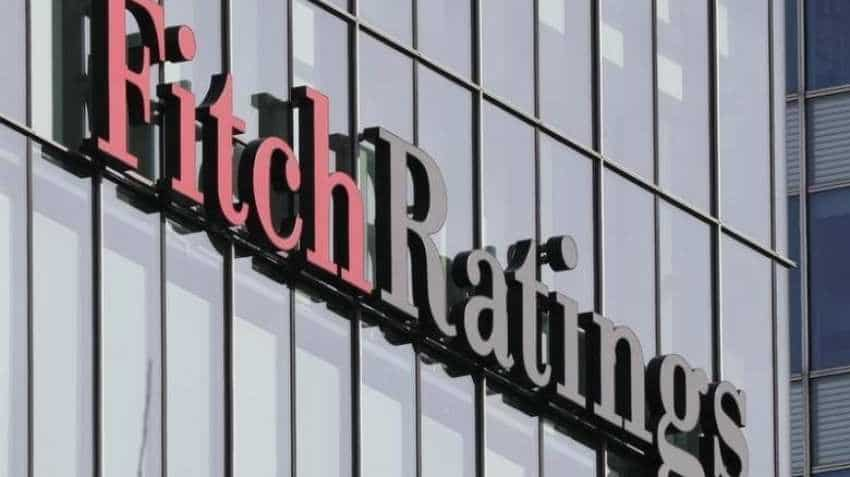Did Fitch just threaten to downgrade India's rating?
Reflecting foreign investor concern at the circumstances in which previous RBI Governor Urjit Patel quit office, Fitch Ratings on Wednesday said the resignation highlights the risks to the central bank`s policy priorities.

Reflecting foreign investor concern at the circumstances in which previous RBI Governor Urjit Patel quit office, Fitch Ratings on Wednesday said the resignation highlights the risks to the central bank`s policy priorities and that its sovereign rating assessment of India could change if government influence pushes the RBI away from its mandate.
In a report following Patel`s abrupt resignation on Monday, the US rating multinational warned that increased government influence on the Reserve Bank of India (RBI) could undermine the central bank`s efforts to improve banking sector health by addressing the non-performing assets (NPA or bad loans) problems.
Citing personal reasons, Patel resigned on December 10, nine months before his three-year term was scheduled to expire. The government on Tuesday appointed former Economic Affairs Secretary Shaktikanta Das as the new RBI Governor.
"The resignation of the RBI Governor follows a period of government pressure on the central bank to spur economic growth, and highlights risks to the RBI`s policy priorities," Fitch Ratings said in a statement.
According to the American agency, the RBI`s efforts to address the bad loan problems have the potential to improve the banking sector`s health over the long term and its commitment to inflation targeting has supported a more stable macroeconomic environment in recent years.
"Increased government influence on the central bank could undermine this progress," Fitch said.
"Patel`s decision comes after months of escalating government pressure on the RBI to ease some of the strains created by its clean-up of the banking sector."
"Increased bad loan recognition has led to large credit costs -- particularly for state banks -- and weaker capitalisation in recent years," the report said.
Capital constraints have held back lending, while 11 state-run banks have been brought under the RBI`s Prompt Corrective Action (PCA) framework which allows the central bank to directly restrict their lending.
Fitch said that problems in the non-bank financial sector following the recent payment default by Infrastructure Leasing & Financial Services (IL&FS) have further reduced credit availability.
"The government has unsuccessfully pushed the RBI to relax the PCA thresholds to allow some banks burdened by accumulated bad loans to step up lending. Calls to dilute provisions in a new regulatory NPL framework that has accelerated bad loan recognition this year and to provide emergency liquidity to non-bank financial institutions (NBFIs) have also been dismissed," Fitch said.
It said most public sector banks are in a poor position to step up lending, with their common equity Tier-1 ratios well below the 7.375 per cent that will apply from April 2019 under the Basel III framework. Some banks are also likely to continue reporting losses, further adding to capitalisation challenges.
"In terms of monetary policy, the establishment of a Monetary Policy Committee (MPC) in October 2016 and recent introduction of inflation targeting has underpinned our view that the RBI`s macroeconomic policy framework is credible and effective. However, that assessment could change if government influence pushes the RBI away from its mandate," Fitch said.
In November, Fitch had affirmed the "BBB-" lowest investment grade sovereign rating on India, with a stable outlook.
Central to the liquidity issue, which has provoked the recent tiff, was the government`s demand that the RBI hand over its surplus reserves by amending its "economic capital framework". Analysts noted that the government`s demand came in the face of a huge fiscal deficit and the need to boost the economy in an election year.
According to Fitch, the general elections due by May 2019 will create a political incentive for the government to push for more supportive RBI policies.
Earlier this month, the rating agency lowered its growth forecast for the current fiscal to 7.2 per cent from 7.8 per cent, citing "weak data, higher financing cost and reduced credit availability".
Get Latest Business News, Stock Market Updates and Videos; Check your tax outgo through Income Tax Calculator and save money through our Personal Finance coverage. Check Business Breaking News Live on Zee Business Twitter and Facebook. Subscribe on YouTube.
RECOMMENDED STORIES

Small SIP, Big Impact: Rs 1,111 monthly SIP for 40 years, Rs 11,111 for 20 years or Rs 22,222 for 10 years, which do you think works best?

SCSS vs FD: Which guaranteed return scheme will give you more quarterly income on Rs 20,00,000 investment?

Rs 3,500 Monthly SIP for 35 years vs Rs 35,000 Monthly SIP for 16 Years: Which can give you higher corpus in long term? See calculations

Power of Compounding: How long it will take to build Rs 5 crore corpus with Rs 5,000, Rs 10,000 and Rs 15,000 monthly investments?
06:02 AM IST










 RBI may face tougher path in February rate cut as Fed reshaped global monetary policy expectations: Report
RBI may face tougher path in February rate cut as Fed reshaped global monetary policy expectations: Report RBI raises collateral-free agricultural loan limit to Rs 2 lakh to aid farmers
RBI raises collateral-free agricultural loan limit to Rs 2 lakh to aid farmers 26th RBI Governor Takes Charge: Sanjay Malhotra sets sights on stability, growth, and trust
26th RBI Governor Takes Charge: Sanjay Malhotra sets sights on stability, growth, and trust How economists view RBI's CRR cut, status quo on rates & stance
How economists view RBI's CRR cut, status quo on rates & stance RBI adds 27 tonnes gold to country's reserve in October: WGC
RBI adds 27 tonnes gold to country's reserve in October: WGC